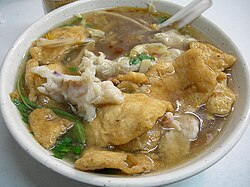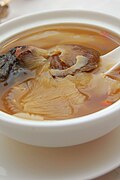
This is a list of notable Chinese soups. Chinese cuisine includes styles originating from the diverse regions of China, as well as from Chinese people in other parts of the world. In China, a broth-based soup is usually consumed before or after a meal. Chinese noodles may be added to some of these soups to create noodle soups.












